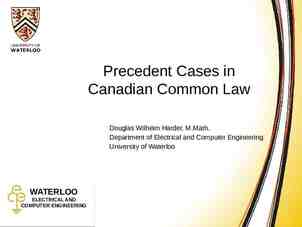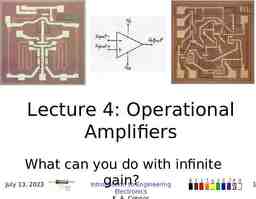What are the Properties of Water?
19 Slides724.00 KB

What are the Properties of Water?

Structure of Water A water molecule (H2O), is made up of three atoms --- one oxygen and two hydrogen. H O H

Polarity In each water molecule, the oxygen atom attracts more than its "fair share" of electrons The oxygen end “acts” negative The hydrogen end “acts” positive Causes the water to be POLAR However, Water is neutral (equal number of e- and p ) --- Zero Net Charge

Hydrogen Bonding in Water Formed between the negative end of a polar water molecule and a positive Hydrogen end of another water molecule One hydrogen bond is weak , but many hydrogen bonds are strong

Interaction Between Water Molecules Negative Oxygen end of one water molecule is attracted to the Positive Hydrogen end of another water molecule to form a HYDROGEN BOND

Cohesion Attraction between particles of the same substance ( why water is attracted to itself) Results in Surface tension (a measure of the strength of water’s surface) Produces a surface film on water that allows insects to walk on the surface of water

Cohesion Helps insects walk across water

Adhesion Attraction between water and substances other than water. Water will make hydrogen bonds with other surfaces such as glass, soil, plant tissues, and cotton. Capillary action-water molecules will “tow” each other along when in a thin glass tube. Example: transpiration process which plants and trees remove water from the soil, and paper towels soak up water.

Adhesion Form spheres & hold onto plant leaves Attach to a silken spider web

Adhesion Causes Capillary Action Which gives water the ability to “climb” structures

Capillary Action Capillary action is the tendency of a liquid to rise in narrow tubes or to be drawn into small openings such as those between grains of a rock.

High Specific Heat Specific heat - amount of heat needed to raise or lower 1g of a substance 1 C. Water resists temperature change, both for heating and cooling. Water can absorb or release large amounts of heat energy with little change in actual temperature.

High Heat of Vaporization Heat of Vaporization-amount of energy to convert 1g or a substance from a liquid to a gas Water resists evaporation b/c lots of H bonds must be broken to transition from a liquid to a gas In order for water to evaporate, hydrogen bonds must be broken. As water evaporates, it removes a lot of heat with it.

Water is Less Dense as a Solid Ice is less dense as a solid than as a liquid (ice floats) Liquid water has hydrogen bonds that are constantly being broken and reformed. Frozen water forms a crystal-like lattice whereby molecules are set at fixed distances.

Water is Less Dense as a Solid Which is ice and which is water?

Water is Less Dense as a Solid Water Ice

Universal Solvent Water is capable of dissolving a variety of different substances Water can dissolves more substances than any other liquid. Important to every living thing on earth, wherever water goes, either through the ground or through our bodies, it takes along valuable chemicals, minerals, and nutrients.

Dissociates into acids and bases Water dissociates, one of the hydrogen leaves its electron with the oxygen atom to become a hydrogen ion, while the oxygen and other hydrogen atoms become a hydroxide ion. H2O Hydrogen ion H OHHydroxide ion

Homeostasis Ability to maintain a steady state despite changing conditions Water is important to this process because: a. Makes a good insulator b. Resists temperature change c. Universal solvent d. Coolant e. Ice protects against temperature extremes (insulates frozen lakes)






